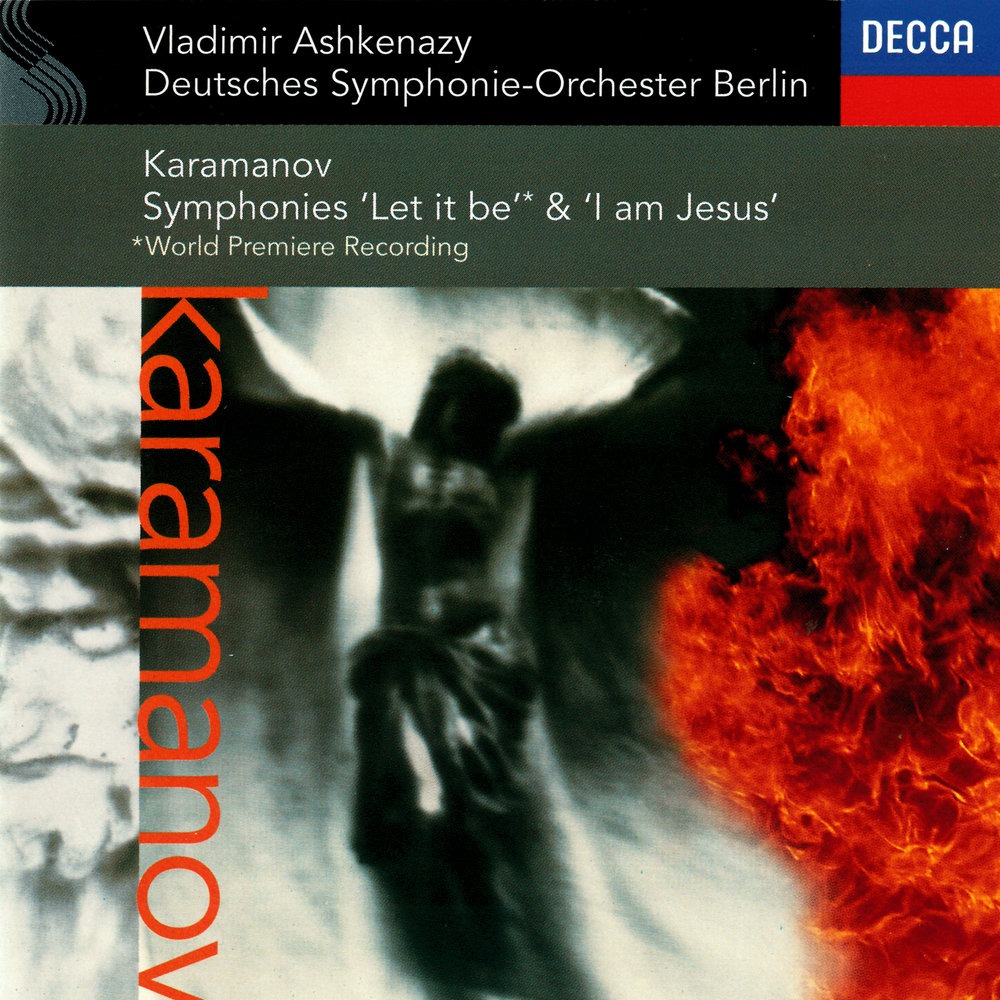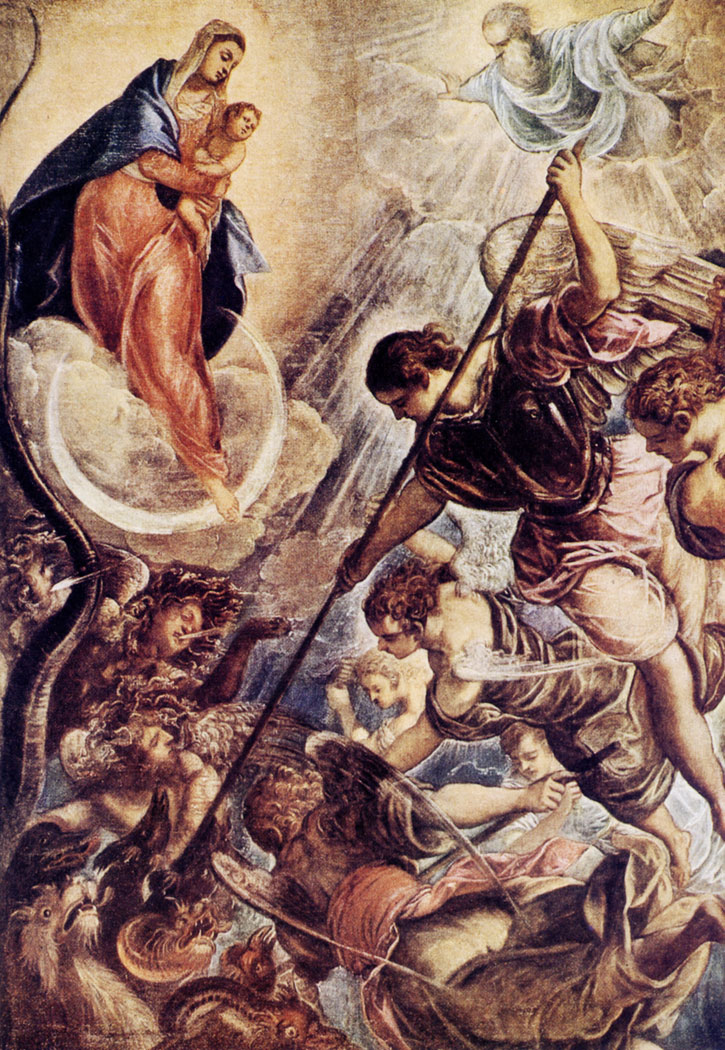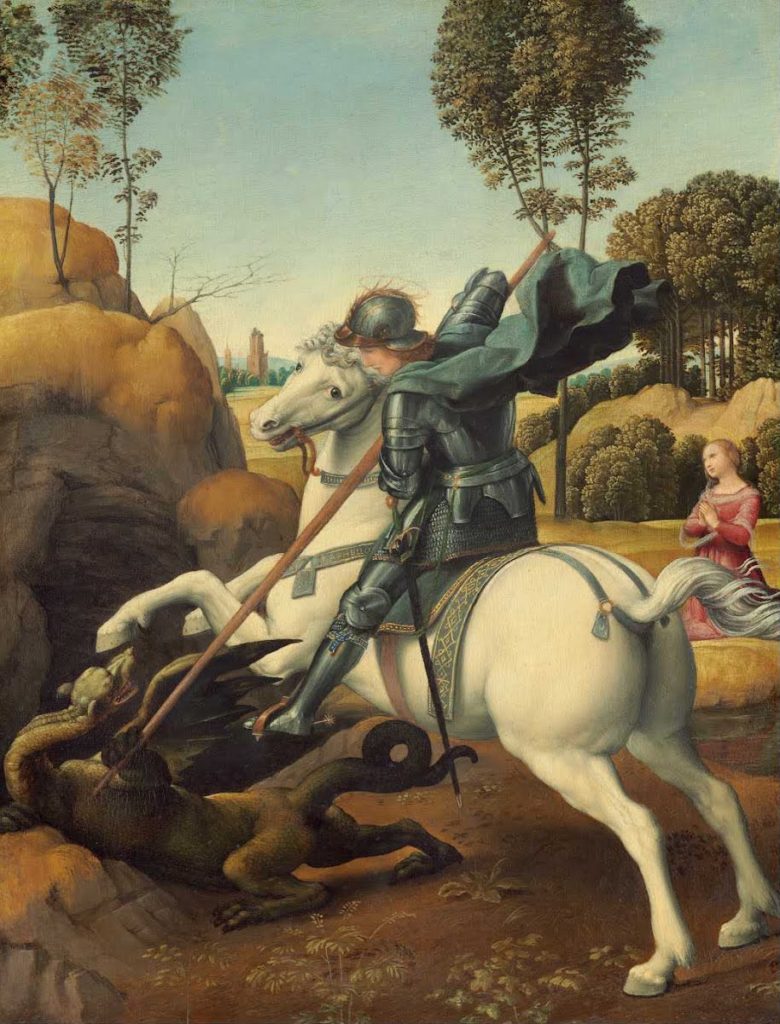

«THROUGH MUSIC TO THE PURIFICATION OF THE HUMAN SPIRIT FOR THE ATTAINMENT OF IMMORTALITY»
Everything that happens in this external world — denies the existence of God.
Everything that happens in the spiritual world — proves that God exists.
Karamanov’s music is the highest confirmation of this!
Musicologist M. Kazinik.


«BYST» Apocalypse
A CYCLE OF SIX SYMPHONY «BYST», BASED ON THE APOCALYPSE (1976-1981).
18th Symphony;
19th Symphony;
20th Symphony;
21st Symphony;
22nd Symphony;
23rd Symphony.
Section: «Religion in Symphony».
Year of creation: 1976-1980.
The work was created by order of the Union of Composers of the USSR.
The «Byst» cycle includes six symphonies — from the Eighteenth to the Twenty-third. (1976 to 1980)
The Twenty-second Symphony was written for a large orchestra.
Work on this large-scale work began in 1976 and was completed in 1981.
The source of inspiration was the Revelation of John the Theologian, the last book of the Bible and perhaps the most terrible, but at the same time the most optimistic.
Its meaning is so profound that excerpts from it are never read during services – the danger of misinterpretation is too great (however, there is no shortage of interpretations – each era finds correspondences to some of its events in the images of the Apocalypse).
Revelation is a description of prophetic visions in which the future fate of the Church and the world as a whole is presented – and this fate seems so difficult and gloomy that the Greek title of the book (apocalypse), which means simply “revelation”, has become a designation for the end of the world.
But these dark prophecies are followed by a shining vision of the Heavenly City – the world is given hope for rebirth and renewal.
The musical embodiment of such a grandiose source required a large-scale form. The “apocalyptic” cycle, called “Byst”, unites six symphonies by A. Karamanov (from the Eighteenth to the Twenty-third), each of which is one-part and has a title in Church Slavonic.
〉 The first symphony – “Loving Us” – embodies the appearance of the Savior to the apostles, his instructions to them.
〉 The second symphony – “By the Blood of the Lamb” – depicts the heavenly vision of the Mother of God, clothed in luminaries, and the struggle with the devil.
〉 The third symphony – “Blessed are the Dead” – unfolds a picture of the appearance of Satan and the persecution of the saints, their suffering.
〉 The fourth symphony — «The Great City» — represents the luxury of Babylon in intoxicating, spicy harmonies.
〉 The fifth symphony — «It Was» — unfolds a grandiose picture of the destruction of Babylon.
〉 The sixth symphony — «I Am Jesus», depicting the thousand-year reign of Jesus Christ.

«Blessed are the dead» means the suffering of the saints, their torment. But they are tormented freely, in the Holy Spirit: «Blessed are the dead who die in the Lord from now on, says the Spirit, they will rest from their labors, and their works follow them» (Rev. 14:13).
The symphony consists of an introduction and four large sections. The composer specifies them: exposition section (c. 4-26), episodic (c. 27-66), reprise (c. 67-106), final (c. 107-120).
The beginning of the symphony is the suffering of the saints persecuted by Satan. Strings and wood in the low register, pp, carry out the theme, the intonations of which subsequently penetrate almost all the themes of the work. A picture of a gloomy dungeon arises, where the saints languish. The theme of the suffering of the saints.
Gradually it moves to the upper register (8 French horns) and acquires a courageous, heroic character, symbolizing faith in salvation (c. 2). In c. 3 contrasting material appears, but on the same theme-chant (solo trumpet):
From the double melodic basis — the descending intonation of the first theme and the ascending movement of the next — the main themes of the symphony develop.
The theme of Satan is conducted by the trombone and tuba under the heavy blows of the tam-tam. The picture of Satan’s arrival instills horror. He seems to say: «What is this noise here? Friends, what is all this noise for?»
Here Satan is in the form of the Beast, and then he will take on human form. The next stage of Satan’s vision — the appearance of the Beast with ten horns, coming out of the sea — these are the Romans (the theme of the horns of the Beast — ch. 34):
This theme will appear in the symphonies «Grad Velii» and «Byst» and will take one of the central places in them. There it transforms into an ascending movement along the diminished scale, one of the symmetrical scales, which in the Russian tradition, for example in Rimsky-Korsakov, is associated with the transmission of fantastic, unreal images.
Read the full contents of the symphony:


Алемдар Караманов.

The main idea of the cycle – the struggle between Good and Evil – is expressed through the contrast of two thematic spheres, each containing a variety of themes.
The composer provided verbal definitions for these themes.
For example, in the Second Symphony, there are themes of Archangel Michael and the Virgin Mary; in the Third Symphony, themes of saints; and in the Sixth Symphony, themes of Jesus and angels.
Adopting different timbral colors and textures, these themes are transformed into «radiant visions.»
All of these themes are based on the musical-rhetorical figure anabasis – a gradual ascending motion.
Opposed to this is the «dark» sphere, which is built upon the opposite figure – catabasis, a descending motion.
From this figure emerge the themes of Satan, the harlot, and death.
In constructing these works, the composer departs from the traditional principles of form typical for the symphonic genre and instead relies directly on the literary source. More specifically, he draws inspiration from a particular feature of the text that many theologians, starting with St. Augustine, have noted: the book repeatedly reiterates the same ideas – but in such a way that they seem like new ones.
Similarly, Alemdar Karamanov’s symphonies are built from numerous modifications of the original motifs, which gives the form a special fluidity (the composer himself stated that in his works, «there is no form except content»).
The modifications often affect not so much the melodic structure of the motifs as other expressive elements (registers, rhythm, orchestration, texture).
Although the symphonies of the «Byst’» cycle lack the traditional sections of sonata form, they do feature sections with traditional functions – ascents, climaxes, and declines. Each subsequent section grows out of the previous one, with their progression determined by the sequence of John’s visions in the book. These are indeed «visions» – something that can be perceived sensually, through sight, which is why the composer compared the symphonies in this cycle to ballets (this association is also reflected in the unique plasticity of the themes).

The sensory appeal of the Book of Revelation is also reflected in another distinctive feature of the text – it is rich in descriptions of sounds: «a voice from heaven, like the roar of many waters,» «like seven thunders,» «like a lion roaring,» and so on.
This «sonority» of the biblical text is mirrored in the vividness of the musical texture: the composer employed an expanded orchestral ensemble, introducing six saxophones, vibraphones, numerous percussion instruments, including castanets and ratchets, as well as electronic instruments – synthesizers and electric guitars.
«Heavenly» images are often represented by the harp and a solo violin in its upper register

The sensory appeal of the Book of Revelation is expressed in yet another feature of the text – it is abundant with descriptions of sounds: «a voice from heaven, like the roar of many waters,» «like seven thunders,» «like a lion roaring,» and so on.
This «sonority» of the biblical text is reflected in the vividness of the musical texture: the composer employed an expanded orchestral ensemble, introducing six saxophones, vibraphones, numerous percussion instruments, including castanets and ratchets, as well as electronic musical instruments – synthesizers and electric guitars.
«Heavenly» images are often depicted by the harp and a solo violin in its high register.
In his compositions, the composer departs from the traditional principles of form in the symphonic genre and directly relies on the literary source, more precisely, on that particular feature noted by many theologians since Blessed Augustine: the book repeatedly presents the same thoughts, but in such a way that it creates the impression of new ideas.
Similarly, the symphonies of Alemdar Karamanov are constructed from numerous modifications of the initial motifs, which gives the form a special fluidity (the composer himself claimed that in his works «there is no form other than content»).
These modifications often affect not so much the intonational structure of the motifs as other expressive means (registers, rhythm, instrumentation, texture).
Although the symphonies «Byst» do not reveal the traditional sections of sonata form, one can identify sections with traditional functions—ascents, climaxes, descents. Each subsequent section grows out of the previous one, and their transitions are determined by the changes in the visions of John in the book. These are indeed «visions»—something that can be perceived sensually, through sight; it is no coincidence that the author compared the symphonies of this cycle to ballets (this genre is also associated with a particular plasticity of themes).
A. Karamanov.



ЧИТАЙТЕ ТАКЖЕ:
Г. Свиридов — «В добрый путь».
А. Шнитке — «В поисках своего пути».
С. Баласанян — «Музыка масштабная, яркая».
М. Рахманова — «Музыка — проводник звучащего мира».
А. Тевосян — «Откровение и благовествование Алемдара Караманова».
В. Адаменко — «Алемдар Караманов: Штрихи к несуществующему портрету».
Л. Прудовский — «Коллаж на тему судьбы композитора Алемдара Караманова».
Ю. Холопов — «Аутсайдер советской музыки: Алемдар Караманов».
П. Поспелов — «Алемдар Караманов расстается с ролью аутсайдера».
П. Богомолов — «Верю в воскресение России». Западная премьера Алемдара Караманова.
Е. Польдяева — «Апокриф или послание»?
И. Батюк — «Stabat Mater Алемдара Караманова».
В. Стадниченко — «Евангелие от Караманова».
Т. Чередниченко, Галина Уствольская — «Алемдар Караманов».
Е.В. Клочкова — «Да будет Мне по слову Твоему».
Е.В. Клочкова — «Праздник музыки Алемдара Караманова».
Е.В. Клочкова — «Новые исполнения музыки Караманова».
Е.В. Клочкова — «Алемдар Караманов: «Именно в музыке проявилась моя вера…».
Е.В. Клочкова — «Тема Апокалипсиса в творчестве А. Шнитке и А. Караманова».
Е.В. Клочкова — «Загадочная художественная личность последней трети прошедшего столетия».
В. Манова — «Авторский концерт Алемдара Караманова в Казани».
А. Ровнер — «Уникальный творческий путь Алемдара Караманова».